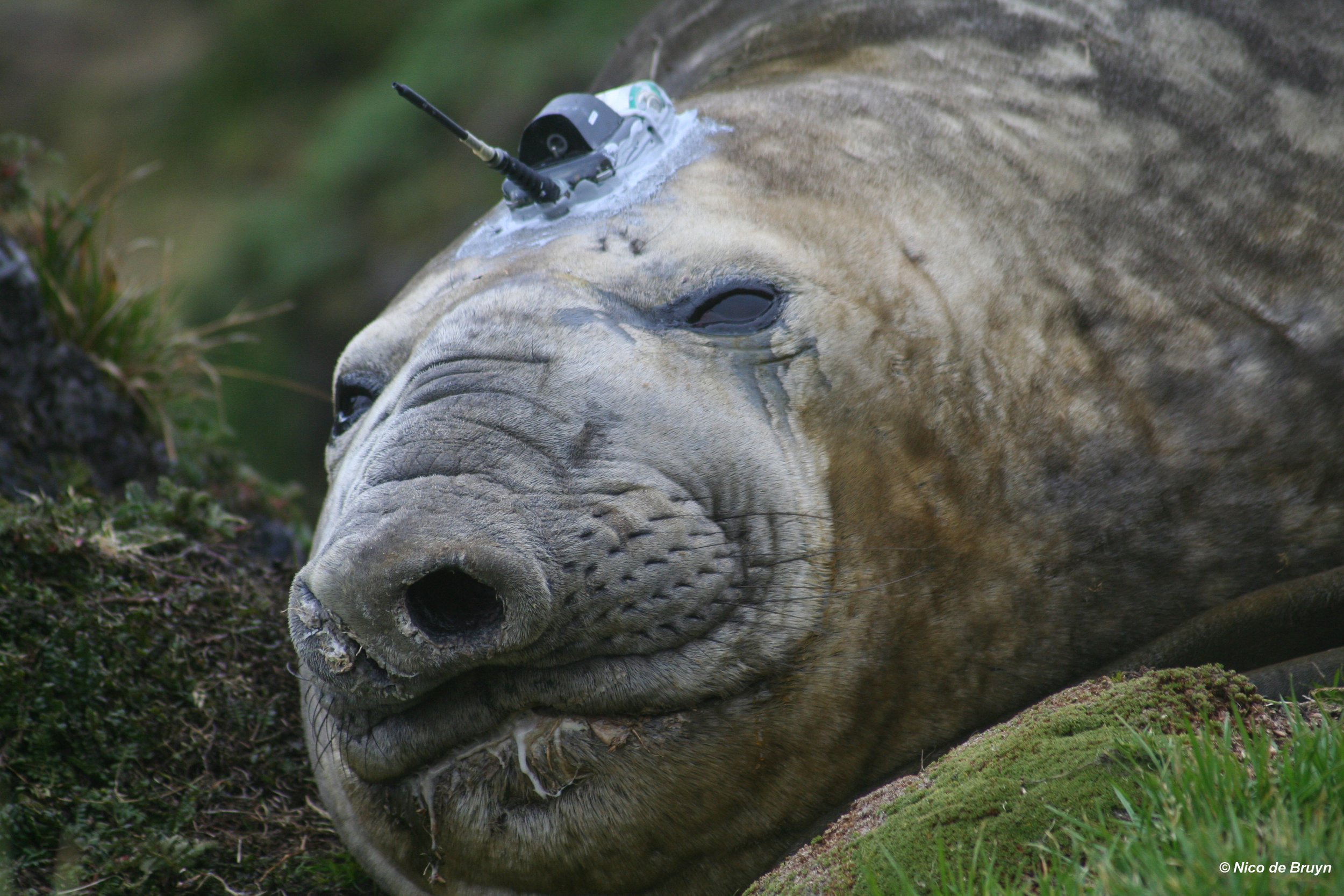Are whisker isotopes of elephant seal pups related to moms’ diet? New insights into fetal metabolism and nutrition
/Studying the diets of large, free-ranging marine mammals is notoriously difficult. As such, there is a drive towards using minimally invasive sampling methods, and previous MIMMP research has shown that seal whiskers can tell us a great deal about their diet (click HERE). When it comes to southern elephant seals, there are also advantages to working with pups as they are easier to handle than their larger and more aggressive grown-up counterparts.
PHOTO CREDIT: Nico Lübcker
Literature suggests that whiskers from seal pups can indirectly tell us about their moms’ diet because they are entirely dependent on their mother for sustenance during gestation and while suckling. MIMMP researchers investigated this proposition in the recent publication ‘Can the carbon and nitrogen isotope values of offspring be used as a proxy for their mother’s diet? Using fetal physiology to interpret bulk tissue and amino acid δ15N values’. The findings were surprising.
In this study, Nico Lübcker, John P. Whiteman, Seth D. Newsome, Robert P. Millar & P. J. Nico de Bruyn tested the validity of using the biomolecules deposited chronologically along the length of whisker sampled from neonate pups to obtain a longitudinal record of their mothers’ foraging habits during gestation. They sequentially measured bulk tissue and amino acid δ15N values along the length of whiskers from southern elephant seal mother-offspring pairs from Marion Island.
Figure 4: Correlation between maternal and foetal bulk tissue δ15N (a) and δ13C (b) values measured sequentially along the length of whiskers during the first-to-second trimester of gestation (T1/2; solid fill symbols) and third trimester of pregnancy (T3; open symbols) of four southern elephant seal (Mirounga leonina) mother–offspring pairs. The dashed black line represents a 1:1 correlation and coloured dashed line represent fitted Loess smoothers for each mother–offspring pair. Details of fitted models are provided elsewhere (Table 3 and S3–S7).
In contrast to previous studies, the mother-offspring pairs were not in isotopic equilibrium or linearly correlated during gestation. Furthermore, both bulk nitrogen (Δ15N) and carbon (Δ13C) isotopic offsets between mothers and their offspring changed as gestation progressed and were pair specific. The observed mother-offspring δ15N differences are likely explained by the shuttling of glutamate-glutamine and glycine-serine among skeletal muscle, liver, placenta, and fetal tissue. Importantly, fetal development relies primarily on remobilized endogenous maternal proteinaceous sources suggesting that pregnant females are in a catabolic-anabolic metabolic state during pregnancy. This finding shows that fetal development is reliant on endogenous maternal protein reserves rather than maternal adipose tissue from the onset of gestation.
These findings shed new light on fetal amino acid metabolism and confirms that the isotopic signatures of elephant seal pup whiskers cannot reliably tell us what the mom ate while pregnant.
This study is the first combined bulk tissue and amino acid isotope approach to investigate the resource pool contributing to fetal development, explore fetal amino acid metabolism, and provide mechanistic explanations between mother and offspring isotope offsets in southern elephant seals. It highlights the importance of performing physiological method validations to understand the limitations of sampling approaches, and stresses the need to differentiate between ecological and physiological factors that influence tissue isotope values before drawing inferences about foraging and movement ecology.
To access the full article CLICK HERE.



















